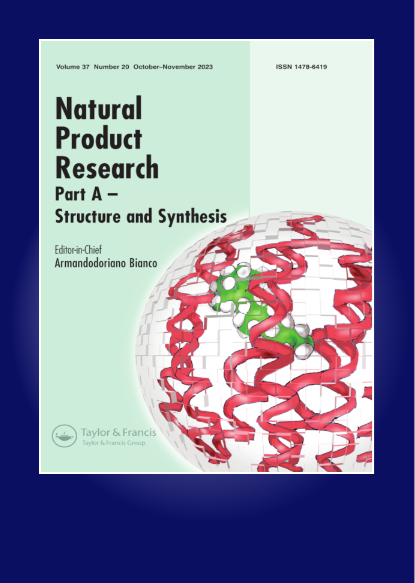利用分子对接研究揭示了昆虫内源性纤维素酶对木质纤维素分解的潜力。
IF 1.6
3区 化学
Q3 CHEMISTRY, APPLIED
引用次数: 0
摘要
昆虫具有纤维素分解系统,能够产生具有多种特异性的多种酶来分解复杂的木质纤维素产物。令人惊讶的是,内切葡聚糖酶、外切葡聚糖酶和β-糖苷酶在一个协同系统中依次作用,促进纤维素分解为可利用的能量源葡萄糖。对来自6目19种昆虫的内切-β-1,4-葡聚糖酶进行了硅对接研究,发现该酶对CMC、纤维素、纤维素三糖、纤维素四糖、纤维素戊糖和纤维素己糖等6种底物均具有高亲和力。此外,几乎所有报道的昆虫来源的β-葡萄糖苷酶也对纤维素二糖表现出相当大的亲和力。范德华键、常规氢键和碳氢键稳定了酶与不同底物之间的相互作用。分子动力学模拟也支持了各种配合物的稳定性。木质纤维素基底物的有效分解成为全球工业界和学术界的主要焦点,这项研究可能会补充昆虫纤维素酶的潜在应用。本文章由计算机程序翻译,如有差异,请以英文原文为准。
Potential of insect endogenous cellulases for lignocellulosic break down deciphered using molecular docking studies
Insects possess cellulolytic system capable of producing variegate enzymes with multifarious specificities to break down complex lignocellulosic products. Astonishingly, endoglucanases, exoglucanases and β-glycosidases act sequentially in a synergistic system to facilitate the breakdown of cellulose to utilisable energy source glucose. In silico docking studies of endo-β-1,4-glucanase from 19 different insects belonging to six different orders identified that it possesses high affinity for all the six substrates, including CMC, cellulose, cellotriose, cellotetraose, cellopentose and cellohexaose. Additionally, β-glucosidase from nearly all the reported insect sources also showed considerable affinity towards cellobiose. Van der Waals, conventional hydrogen bonds and carbon-hydrogen bonds stabilise the interaction between the enzyme and different substrates. Molecular dynamics simulations also held up the stability of various complexes. Efficient breakdown of lignocelluloses-based substrates becoming a major focus of industrial and academic communities worldwide, this study can perhaps complement the propensity of insect cellulases for prospected applications.
求助全文
通过发布文献求助,成功后即可免费获取论文全文。
去求助
来源期刊

Natural Product Research
化学-医药化学
CiteScore
5.10
自引率
9.10%
发文量
605
审稿时长
2.1 months
期刊介绍:
The aim of Natural Product Research is to publish important contributions in the field of natural product chemistry. The journal covers all aspects of research in the chemistry and biochemistry of naturally occurring compounds.
The communications include coverage of work on natural substances of land and sea and of plants, microbes and animals. Discussions of structure elucidation, synthesis and experimental biosynthesis of natural products as well as developments of methods in these areas are welcomed in the journal. Finally, research papers in fields on the chemistry-biology boundary, eg. fermentation chemistry, plant tissue culture investigations etc., are accepted into the journal.
Natural Product Research issues will be subtitled either ""Part A - Synthesis and Structure"" or ""Part B - Bioactive Natural Products"". for details on this , see the forthcoming articles section.
All manuscript submissions are subject to initial appraisal by the Editor, and, if found suitable for further consideration, to peer review by independent, anonymous expert referees. All peer review is single blind and submission is online via ScholarOne Manuscripts.
 求助内容:
求助内容: 应助结果提醒方式:
应助结果提醒方式:


